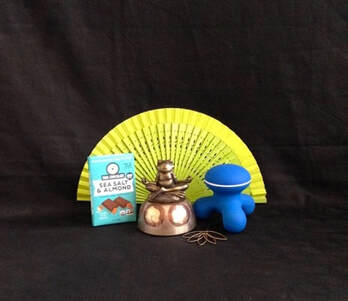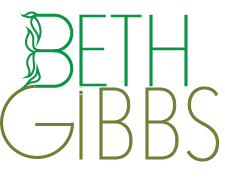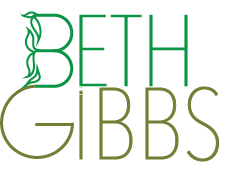ENLIGHTEN UP! a blogSelf-awareness stories: lighting our way to clarity, contentment and resilience in a complicated world.
|
 “Self-care is how you take your power back.” ― Lalah Delia The best and most important way to jump-start your self-care routine is to manage your stress levels. A certain amount of stress is normal and necessary. If we didn’t experience positive stress every second of the day, we wouldn’t breathe, our bodies wouldn’t function, our brain would stop working and we’d die – pure and simple. Unhelpful stress, on the other hand, is any event that interferes with our equilibrium on the physical, mental and emotional levels. Here’s my personal definition. Stress is anything that makes my upper lip curl, my stomach sink or my head explode with anger, fear or shock. Unhelpful stress can result from a variety of power sucking sources. Here is a partial list: Behavioral, Medical or Mechanical
Fight or Flight Whether the source of stress is life-threatening, nerve wracking or simply annoying, the instinctive physiological response is to resist or run away. When a short-term stress event occurs our sympathetic nervous system kicks in. Our heart rate and blood pressure increase. Blood is shunted away from the abdominal organs to the arms and legs as adrenaline and cortisol are pumped into the body to prepare us to fight or run. When the situation is over, or if we are able to shortcut the stress response, the parasympathetic nervous system kicks in and the body experiences a reduction in heart rate and muscle tension. Our breathing slows and the body releases acetylcholine, which gives us a sense of balance and well-being that restores some of the power lost in dealing with the stress event. Long-term stress from habitual fight or flight responses can have serious physiological effects on the body such as:
Freeze To be caught like a ‘deer in the headlights,’ to be so frightened or surprised that you cannot move or think. For example:
After the freeze can come action – fight or flight. Personally, I’d like to think that in the ‘stranger’ scenario I’d fight and in the disaster scenario, I’d find a way to run but one never knows what one will do in a traumatic situation until it happens. These fight, flight and freeze responses show up in non-life threatening situations that happen to most of us all too often. Here are two of my stress stories. At a family Thanksgiving dinner, one of my close relatives said something to me so outrageous and offensive that I froze in disbelief not knowing how to respond. After my stunned freeze moment, I elected for flight, excused myself from the table and engaged in silent fuming in the upstairs hallway of my mother’s house. I still have a strong visceral memory of my reaction and the hurtful words that caused it a full twenty years after it happened. Flight is my go-to response in conflicts that cannot be peacefully resolved. Here’s a scarier one. I came home from work one day to find that my house had been broken into. My television and several items of jewelry were stolen. I froze and panicked. After the freeze moment passed, I went into fight mode. I called the police, nailed the windows shut on the ground floor, installed an alarm system and got a dog. It was scary but not-life threatening. In that scenario, fight was my go-to response. I took action and got my power back. Friend The friend response, not surprisingly, has been noticed more in women than in men. Women tend to seek support from friends and social groups in times of stress. According to the research, women tend to friend as opposed to fighting or fleeing. Of course, this depends on the individual and the situation. And yes, in the Thanksgiving and home burglary stress stories, I did call a friend to vent and share. Getting support from friends is a fulfilling way to take power back from a stressful situation. Whether your go-to stress response is fight, flight, freeze, friend or a combination of these, the way to deal with stress and take your power back is to build internal resilience. Resilience can be defined as the ability to rebound quickly from a crisis, tragedy, trauma or a serious case of ‘stress mess.’ After a traumatic experience, the ability to move on with life often depends on how resilient you are and how willing or able you are to confront the original traumatic event. Moving forward from trauma often requires help from counseling or group therapy. According to the article, “The Secrets of Resilient People,” by Beth Howard that appeared in the AARP Magazine November December 2009: “Highly resilient people don’t fall apart or if they do, it’s not for long. They call on their inner strength and recruit outside resources to keep moving forward. And they ‘tweak’ their future expectations to fit a new reality be it the loss of a loved one, a life-changing diagnosis or a devastating financial blow.” Resiliency varies from person to person but scientists agree that there is a genetic component and resiliency, like any skill, can be learned. It’s self-care 101. A good place to start is to friend your breath. The Relaxation Breath is a technique you can do anytime and anywhere. What it is It is a breath technique that does four things at the same time. It:
Science has found that in addition to its metabolic functions in keeping us alive, how we breathe has a relationship to how we feel. For example, when we feel stressed, angry or in pain we often hold our breath, breathe rapidly or take short shallow breaths. When we become aware of how our breath reacts to stress, intense emotions or pain, we can begin to manage our breathing, which in turn can affect how we feel. Regular practice will help you build resilience and short cut your response to unhelpful stress. How to do it The Relaxation Breath lengthens calms your nervous system, ‘in the moment.’ Instructions 1. Sit with your spine comfortably aligned. 2. Soften your chest and shoulders. 3. Close your eyes or keep them slightly open with a downward gaze. 4. Inhale normally. Exhale normally. 5. After exhaling, hold your breath out and silently count “one thousand one, one thousand two.” 6. Repeat and continue for 2-3 minutes or longer if you are comfortable. If you practice regularly, you will be able to use this technique in situations when you must stand and keep your eyes open. Here are a few more self-care practices that help you build resilience: Be connected: Be social, join groups and ask for help when you need it Be optimistic: See life as a glass half full not half empty; find humor even in awful situations Believe in something bigger than yourself: It can be religion, a spiritual path or just finding joy in nature or a hobby Be playful: Enjoy yourself in childlike ways often – like dance or laugh when no one is watching or participate in the power of wonder (at the sky, a landscape or life itself) Give back: Volunteer, help a neighbor, mentor a child or share a talent Pick your battles: Know the difference between things you can change, solve or control and those you cannot. Understand that in any situation you have only three choices, you can change the situation, change yourself or leave. Pick your battles and the adjust your choices to fit the situation Stay healthy: You know the rules; eat a healthy diet (make sure dark chocolate is in there somewhere!), exercise in whatever way you can, keep a positive mental attitude. Exercise helps to repair neurons in brain areas that are susceptible to stress. Actively seek solutions to your problems: Recognize a problem and take action first rather than wait for someone or something outside of yourself to rescue you. Find the silver lining: Use your personal strength to convert misfortune and difficult situations into some type of a positive outcome; use that strength to see difficult situations as an opportunity to live with clarity, contentment and resilience for a wiser and more balanced life. If we are consistent with our self-care practices, we build resiliency and can keep our short-term stress events from becoming long-term and chronic. “Stress is the trash of modern life. We all generate it but if you don't dispose of it properly, it will pile up and overtake your life.” ― QuoteGarden.com
4 Comments
7/10/2019 04:30:06 pm
This is something I need in my life right now. Finding a place free of stress and learning "ME TIME" is valuable. A place of peace,relaxation and let go. Been carrying too much for too long..
Reply
11/12/2019 08:32:59 am
A wonderful article, Beth! I was really drawn into it and had some "ahhh" moments that will help me personally as well as professionally. I love your clarity and wisdom.
Reply
Joolz
7/6/2022 07:56:26 am
Hi Beth, I have recently recognised that I've been stuck in freeze mode for years, how do unstick myself please??
Reply
7/6/2022 12:19:45 pm
Dear Joolz,
Reply
Your comment will be posted after it is approved.
Leave a Reply. |
Archives
July 2024
AuthorBETH GIBBS started her yoga practice in 1968, four months after her son was born and she’s been practicing ever since. She currently teaches all levels therapeutic yoga classes for adults, and specialty classes for seniors in the Hartford, Connecticut area. Beth is a certified yoga therapist through the International Association of Yoga Therapists and is guest faculty at the Kripalu School of Integrative Yoga Therapy. She writes for the blogs, Yoga for Healthy Aging, and Accessible Yoga. Her master’s degree from Lesley University in Cambridge, MA is in Yoga Therapy and Mind/Body Health. Categories |
|
|
Enlighten Up! a Blog
|
Copyright © 2023 Beth Gibbs

 RSS Feed
RSS Feed
